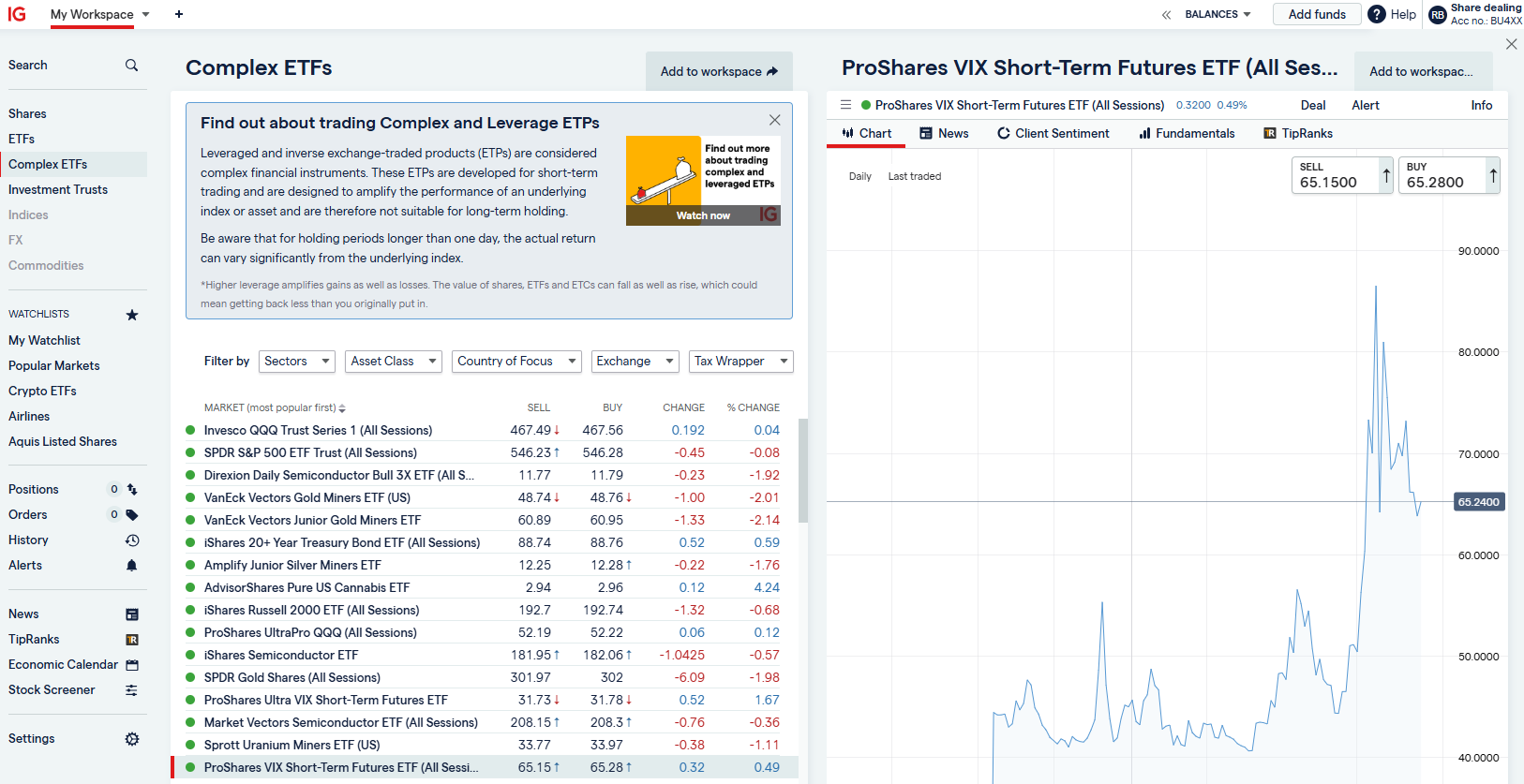-
 Reviews By
Richard Berry
Reviews By
Richard Berry
- Updated
Quick answer: The best ETF platforms for investing in the UK are InvestEngine for low costs, Interactive Brokers for international investing and IG for more complex exchange-traded fund trading.
ETF investing platforms let you buy Exchange Traded Funds which are a basket of shares, funds, currencies or commodities in one go that roughly track the performance of the underlying assets. ETFs are one of the cheapest, most diverse and most effective ways to start investing in the stock markets.
| Name | Logo | GMG Rating | Customer Reviews | ETF Annual Fees | ETFs Available | CTA | Feature | Expand |
|---|---|---|---|---|---|---|---|---|
|
GMG Rating |
Customer Reviews 4.3
(Based on 1,119 reviews)
|
ETF Annual Fees £59.88 |
ETFs Available 1,000 |
See Offer Capital at risk |
Features:
|
interactive investor: Best ETF investing for large accounts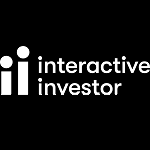 Provider: Interactive Investor ETF Investing Verdict: Interactive Investor won our award for best ETF investing account in the 2022 awards. You can choose from over 1,000 ETFs to invest or use their expert picks in the Super 60 and ACE 40 lists. Summary A good ETF investing platform for larger accounts, as costs are fixed and do not increase with your portfolio.
Fees: Interactive Investor ETF dealing commissions are a free trade every month, then charged £3.99 or upgrade to a £19.99 “Super Investor” account 2 free monthly trades and deal for £3.99. Regular investing is free. Pros
Cons
Overall4.1 |
||
|
GMG Rating |
Customer Reviews 4.5
(Based on 1,330 reviews)
|
ETF Annual Fees £0 |
ETFs Available 1,050 |
See Offer Capital at risk |
Features:
|
Interactive Brokers: Best for international ETF investing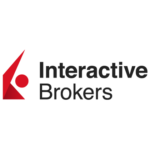 Provider: Interactive Brokers ETF Investing Verdict: Interactive Brokers has a very advanced platform and execution capacity for international investing on over 150 ETFs. Interactive Brokers’ reimburses clients for commissions paid on ETF shares held for at least 30 days. IBKR Lite clients always pay $0 commissions on ETFs. Summary An excellent ETF investment platform for professional traders and complex portfolios.
Fees: Interactive Brokers minimum dealing commisssions are £1 in the UK or 0.05% of the deal size. Pros
Cons
Overall4.2 |
||
|
GMG Rating |
Customer Reviews 4.2
(Based on 1,094 reviews)
|
ETF Annual Fees 0% – 0.25% |
ETFs Available 1,500 |
See Offer Capital at risk |
Features:
|
AJ Bell: Best ETF platform for low-cost ETF investing in the UK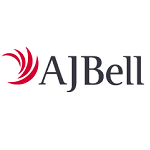 Provider: AJ Bell ETF Investing Verdict: With AJ Bell you can invest in over 1,500 ETFs as well as use their screener to search for the best ETFs based on price, costs, performance and target market. Summary A low-cost ETF platform listed on the LSE, that can also help you choose what ETFs to invest in.
Fees: AJ Bell ETF account fees are capped at £3.50 a month. Dealing costs are £1.50 for funds and £5 for shares but drop to £3.50 where there were 10 or more online share deals in the previous month. Pros
Cons
Overall4.1 |
||
|
GMG Rating |
Customer Reviews 3.8
(Based on 1,759 reviews)
|
ETF Annual Fees 0% – 0.45% |
ETFs Available 2,000+ |
See Offer Capital at risk |
Features:
|
Hargreaves Lansdown: Excellent full-service ETF investment platform Provider: Hargreaves Lansdown ETF Investing Verdict: Hargreaves Lansdown’s ETF platform offers a huge range of exchange-traded funds tailored to various investment strategies. They also have an expert research team that provides ETF investing ideas. Summary A very reliable way to invest in ETFs with one of the UK’s largest investment platforms.
Fees: There is no account charge to hold ETFs in a Hargreaves Lansdown dealing account. But in a SIPP and ISA ETFs are charged at 0.45% capped at £45 per year. ETF dealing charges £11.95 per deal or £5.95 if you do over 20 deals per month. Pros
Cons
Overall4.3 |
||
|
GMG Rating |
Customer Reviews 3.6
(Based on 74 reviews)
|
ETF Annual Fees 0.12% |
ETFs Available 6,400 |
See Offer Capital at risk |
Features:
|
Saxo Markets: Best ETF trading platform for experienced investors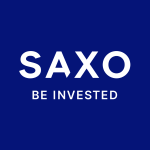 Provider: Saxo Markets ETF Investing Verdict: Saxo Markets offers trading on 6,400+ ETFs from tech, healthcare, environment and other major sectors. You’ll also get access to research on ETFs across sectors and markets, investment inspiration, live market updates, expert analysis, podcasts and webinars. Summary A great choice for serious ETF investors that trade on a regular basis with large portfolios..
Fees: *Saxo Markets charges a commission based on a percentage of ETF transaction size. They are very competitive though and ETF trading commission starts at 0.1% (£100 if you buy £100,000 worth of stock) and drops to 0.05% for more active traders. Pros
Cons
Overall4.4 |
||
|
GMG Rating |
Customer Reviews 3.9
(Based on 678 reviews)
|
ETF Annual Fees £96 |
ETFs Available 2,000 |
See Offer Capital at risk |
Features:
|
IG: Best for ETF platform for spread betting and CFD trading Is IG good for ETF investing and trading? Yes, with IG you have the option of either investing in the long term by buying ETFs in their general investment account, SIPP or ISA. Or you can speculate on them going up or down by going long or short via CFDs or financial spread bets. For more advanced investors you also have the options of investing in leveraged and inverse ETFs. These allow you to invest in ETFs that go up as the market goes down, which can be very useful for hedging your long-term portfolio against short term market crashes. You can also invest in ETFs that move based on how volatile the markets are. So as well as investing in company and index performance, you can for example, invest in the ProShares VIX Short-Term Futures ETF to potentially profit from volatile markets. Fees: Share dealing fees have just been removed which means you can buy and sell UK and US ETFs for free, with the exception of the FX charge when you buy US-denominated ETFs, where the foreign exchange fees are 0.5% on the conversion. A good choice for frequent ETF investors who want access to the US markets.
Pros
Cons
Overall4.3 |
Methodology: How we chose the best ETF investing platforms in the UK. We have chosen what we think are the best ETF trading platforms based on:
- over 30,000 votes and reviews in our annual awards
- our own experiences testing the ETF platforms with real money
- an in-depth comparison of the features that make them stand out compared to alternative ETF brokers.
- interviews with the ETF account CEOs and senior management
How to invest in ETFs: A beginners guide to buying ETFs
If you want to buy exchange traded funds you need to follow these steps
- Choose an ETF invest investment account (you can opt for a normal GIA investment account or a tax free Stocks and Shares ISA)
- Deposit funds (in the UK it is GBP)
- Select an ETF to buy (using their ticket code)
- Track the performance of that ETF in your investment account (it’s up to you to decide when to sell for a profit or loss)
Quick ETF Investing Q&A:
What is an ETF? An ETF is a fund that invests in lots of different companies and is themed by sector that you can buy on the stock market.
How do I invest in ETF directly? You cannot invest directly in ETFs, you need to use a stock broker like Interactive Brokers, or an ETF platform like InvestEngine.
What is the 3:5-10 rule for ETFs? The rule is there to ensure that funds are diverse and not overexposed, which helps protect retail investors from unnecessary risk. This means that ETFs cannot hold control more than 3% of a company via shares, have a position larger than 10% or (as a asset manager) have over 10% of it’s money in all funds combined.
What is the best way to buy an ETF? The best way to buy an ETF is to allocate a small percentage of your investment portolfio to each sector of themes via a low cost ETF investing platform like InvestEngine (which does not charge commission or account fees).
Can I just invest in ETFs? Yes, although just investing in ETFs means you do not get potential profits from owning individual shares. There are also running costs involved in owning ETFs that you do not pay with shares. However, owning just ETFs, will make your portfolio more diverse and easier to manage.
What does ETF mean?
ETF stands for Exchanged-Traded-Funds and are essentially baskets of shares that can be traded in one go. So instead of buying 15 different mining shares, you can buy a mining ETF.
- ETFs are one of the fastest-growing areas of the financial markets.
- Investors like them because they are cheap and transparent and offer easy access in terms of coverage.
- Even sophisticated hedge funds trade ETFs because of their deep liquidity.
Advantages of investing in ETFs
- Diversification: Buy groups of stocks or assets for diversification
- Additional markets: Buy commodities, currencies or property as easily as buying a stock
- Portfolio hedging: Buy protections against the market going down
- Low cost – it is cheaper to buy a ETF rather than individual stocks
Disadvantages of ETFs
- Performance: ETFs do not perfectly track an asset (gold for example)
- Fees: Additional annual costs for holding ETFs in a portfolio
- Reduced income: Dividends not as high as owning individual stocks
What are the best ETFs to buy?
If you are just starting to invest in ETFs, here is how you can build a diverse portfolio from just investing in ETFs.
One of the most important uses of ETFs is to diversify your portfolio across asset classes. In the past, you needed to buy stocks and gilts separately, topped up with a vault full of physical gold coins. Now, you can easily diversify across different asset classes in a single stock account.
For example, with just five ETFs, you can have a balanced exposure of equity, bond, property, and gold.
- iShares FTSE 100 (ISF)
- Vanguard FTSE All World ETF (VWRL)
- SPDR Barclays 15+ Year Gilt (GLTL)
- iShares UK Property (IUKP – holding REITs)
- iShares Physical Gold (SGLN)
While ETFs are very useful, potential investors should understand they own risk appetite, needs, and investment goals.
The starting point is asset allocation. How much capital to allocate to equity ETFs and how much to bonds and commodities. The broad asset classes one should consider are:
- Equities
- Bonds
- Commodities
- Themes
Within the equity space, you will need to consider this issue:
- Domestic equity ETFs
- Foreign equity ETFs
- Specialised ETFs
And for bonds, the two distinct ETFs are government and corporate bonds. As for commodities, you will meet broad-based commodities ETFs or single-commodity ETFs such as gold ETF.
As a general rule of thumb, the younger the investor the more risk he/she should take. Younger investors should aim for long-term capital appreciation, which may carry somewhat higher risk, such as emerging markets ETFs like Vanguard FTSE Emerging Market (VFEM).
Generating income from investing in ETFs
For older investors, the focus would be income. There are several ways to extract income from ETFs. Broad equity-focussed ETFs may not satisfy some investor’s requirements completely because the average yield could be too low. To focus on dividends would require a different composition.
To this end, iShares UK Dividend ETF (IUKD) selects FTSE 350 stocks based on their dividend yields. At the moment, it yields a chunky 6.5%. The only drawback is that high-yielding stocks may perform poorly – hence the high yield. If you wish to buy high-dividend stocks from across the world, then Vanguard FTSE All-World High Dividend Yield (VHYL) may suit this purpose.
In the US, dividend aristocrats ETFs – ie, firms paying dividends for many decades – are popular. The SPDR S&P Dividend (SDY) has more than $17 billion AUM.
Apart from equity dividend, bond ETFs could be an area to earn income with relatively low price volatility. In the US, the short-dated bond fund – iShares 1-3 Year Treasury Bond ETF (SHY) – yields about 1.7%. Not too bad considering it holds US Treasuries only. In the UK, because the base rate is low, the payout is much lower. For example, the SPDR Barclays 1-5 Gilt ETF (GLTS) has a yield of less than 0.5%.
To chase yield, investors are more active into corporate bonds, such as the iShares Core £ Corporate Bond ETF (SLXX), which gives a comparatively better yield of around 2.7%.
ETFs have benefited hugely from the secular shift into passive investing because active funds, despite their high fees, have not really outperformed the general market. So, why pay?
ETFs’ increasing popularity sets in motion a virtuous cycle. More providers move into the market, drawing innovation and providing wider asset coverage – which, in turn, attracts more capital. ETFs are proven financial instruments that should have a place in every investor’s portfolio.
Hedging your portfolio by investing in ETFs
If you have a portfolio of shares but do not wish to sell any even though you think the market is going to go down, you could buy volatility ETFs. These volatility ETFs go up in value when equity prices fall.
The second way to hedge with ETF is to buy short ETFs. A short ETF moves in the opposite direction to the index it tracks. For example, a 1% drop in the FTSE 100 Index will result in a 1% rise in the short ETF value. Most of these short ETFs are synthetic ETFs.
In the UK, the Xtrackers FTSE 100 Daily Short (XUKS) is one such ETF that offers an inverse performance to the FTSE 100 Index. It rallied from 380 to 430 in the second half of 2018 as the FTSE 100 weakened from 7,700 to 6,700.
A word of caution: Like volatility ETFs, inverse ETFs are not meant for long-term hold – simply because of the way these ETF returns are calculated. They could lose value even when the underlying index is rangebound. Therefore, the holding period of these short ETFs must be short in duration.
Different ETF investing strategies
The three best strategies for investing in ETFs are:
- Buy-and-Hold. This method is for investors who aim at long-term income and capital appreciation. This is suited for income-seeking, long-term portfolio builders, and investors that eschew market timing.
- Buy-and-Hold with some market timing. For example, you could use the so-called Ivy Portfolio strategy developed by Mebane Faber to protect your portfolio during bear markets. For instance, the method requires a monthly update on your portfolio holdings to see if the ETF has traded below its 12-month moving average. If it does, sell.
- Market Timing. This mean you will trade and churn your ETF portfolio depending on your views and trading methods. Transaction costs will go up if the churn is excessive.
Another point to remember is the weighting of each ETF in your portfolio. You may put more capital into bond ETFs as they are less volatile than equity ETFs.
In conclusion, which method is for you? I can’t tell you this as the answer is inside you already. You just have to find it. In searching for the ‘perfect method’, however, it pays to remember John Bogle’s advice:
Long-term investment success is based on simplicity.*
*John Bogle was the founder of the Vanguard Group.
Choosing what ETFs to invest in:
Below are five key factors that you should consider when choosing ETFs:
- Providers/Sponsors – Who is sponsoring the fund? These days the ETF industry is concentrated in a few big names. The scale and reputation of these providers should promote long-term stability. However, there are many smaller (niche) providers that are equally good. In the UK, iShares (Blackrock) and Vanguard are two trusted ETF providers.
- Underlying (Benchmark) Index – Find out what is the ETF try to achieve. Most ETFs will have an underlying index to track, which may or may be maintained by the ETF provider. Take the iShares FTSE 100 ETF as an example. The underlying index is the FTSE 100 Index, which is calculated by the FTSE Group. This index is then licensed to iShares, which attempts to replicate the returns of the FTSE 100 Index. Some indices could be esoteric and difficult to understand. They should be avoided. Also, if the underlying assets have illiquidity problems, this will result in large tracking errors. Additional questions you should ask:
- Equity ETF: Large-, mid- or small-cap? Single country or regional?
- Bond ETF: Gov or Corporate bonds? High-Yield (junk) or Investment Grade?
- Commodity ETF: Single or multi-sectors? Stocks or futures or synthetic? Roll Yield?
- Other questions: Is the ETF priced in domestic or foreign currency? Currency hedged? Where is the fund domiciled? Can it be traded within ISA or SIPP?
- Cost – Every fund costs money to run. Management fee, custody, and compliance costs could be considerable. Some ETF providers are more efficient, therefore provide cheaper funds for investors. The thing to look is the Total Expense Ratio (TER), which is the percentage of fund assets used to cover the fund costs annually. This figure will be published by provider for each fund. Avoid funds with high TERs.
- Size – Given the large range of ETFs in the market, investors naturally gravitate towards those ETFs that are better known, more efficient, and least costly. Choose larger ETFs as their liquidity/trading volumes are better. Remember that the asset class behind the ETF may also impact the bid-ask spread.
- Income – Does the ETF pay any income? Not all does, such as physical commodity ETFs. For many, dividends are paid on a periodic basis (quarterly or semi-annual). Find out more from the ETF’s fact sheet.
⚠️ FCA Regulation
All ETF trading platforms that operate in the UK must be regulated by the FCA. The FCA is the Financial Conduct Authority and is responsible for ensuring that UK ETF investment platforms are properly capitalised, treat customers fairly and have sufficient compliance systems in place. We only feature ETF investment accounts that are regulated by the FCA, where your funds are protected by the FSCS.
ETF Platform FAQs:
ETFs are exchange traded funds that track the performance of an underlying asset or group of assets and are traded on stock markets as easily as shares.
The main things to consider when choosing an ETF investing platform are:
- ETF investing costs – how much does it cost to buy and sell ETFs
ETF GIAs – a general investment account for regular investing - ETF Stocks & shares ISAs – invest up to £20,000 a year in Exchange traded funds
- ETF SIPPs & Pensions – can you invest in ETFs for your retirement?
- ETF Junior SIPPs and ISAs – can you buy Exchange traded funds for your children?
- ETF Lifetime ISAs – does the platform offer ETF investing in Lifetime ISAs to help you buy your first house?
The cheapest way to hold ETFs is to select an ETF investment account with the lowest fees. For the providers we cover InvestEngine offers free ETF investing, or if you have a large account balance, fixed-fee ETF investing platforms like Interactive Investor is a good choice.
An ETF platform is an investment account that lets you buy and sell ETFs (exchange-traded funds) for long or short term investing. ETF platforms act as brokers and hold your ETFs in safe custody accounts.
The best thing about ETFs is they let you build a diverse portfolio of investments quickly and cheaply. However, ETFs cover different markets, themes and risk so to find out what ETF is best for you read our guide on how to invest in ETFs
Yes, ETFs are traded on stock exchange as are safe to trade an invest as long as you do so through an FCA regulated broker.
Yes. ETFs can be included in multiple tax-efficient accounts, such as stocks and shares ISAs or Self-Invested Personal Pensions (SIPPs).
Yes. But only if you buy an ETF that goes up. As with all investing it is also possible to lose money if you pick a poorly performing ETF.
Yes, you can go long or short ETFs through spread betting or CFD providers like City Index, IG, CMC Markets.
Further reading: compare CFD brokers and spread betting brokers to see what makes each of them stand out.
You can buy ETFs through investment platforms like Interactive Investors or Nutmeg. Through share dealing accounts you can choose exactly what ETFs to buy, but through robo-advisors, you can only buy ready-made portfolios of ETFs.
Here is a list of the top 20 ETFs in the UK
- iShares FTSE 100 (2000) – ISF
- Vanguard FTSE 100 (2012) – VUKE
- SPDR FTSE All Share (2012) – FTAL
- Vanguard FTSE 250 (2014) – VMID
- iShares UK Small Cap (2009) – CUKS
- iShares UK Dividends (2005) – IUKD
- Vanguard FTSE All World Equity (2012) – VWRL
- Vanguard FTSE All World Dividend (2013) – VHYL
- Vanguard S&P 500 (2012) – VUSA
- Invesco Nasdaq 100 (2002) – EQQQ
- iShares Core MSCI Europe (2007) – ISEU
- xTrackers Stoxx 50 (2008) – XESC
- Vanguard FTSE EM (2012) – VFEM
- iShares Core UK Gilt (2006) – IGLT
- SPDR Bloomberg Barclays 1-5 Year Gilt (2012) – GLTS
- iShares Sterling Index-Linked Gilts (2006) – INXG
- iShares Corporate £ Bond (2004) – SLXX
- Invest Physical Gold (2009) – SGLD
- ETFS Physical Silver (20 07) – PHAG
- iShares UK Property (2007) – IUKP
One of the most popular equity ETF in the UK is the iShares FTSE 100 ETF (ISF). This £6.5bn fund tracks the FTSE 100 Index physically (ie, invest in FTSE 100 shares) and is highly liquid. Other UK-based equity ETFs include:
- iShares FTSE 100 (2000) – ISF
- SPDR FTSE All Share (2012) – FTAL
- Vanguard FTSE 250 (2014) – VMID
- iShares UK Dividends (2005) – IUKD
- iShares UK Small Cap (2009) – CUKS
While an ETF is a good diversification tool, do not hold too many with overlapping constituents. For instance, by holding only ISF and VMID you already have a broad exposure to FTSE 350 stocks. Hence there is no need to buy FTAL (FTSE All Share).
Also bear in mind the type of exposure you wish to have. If income-focussed, UK Dividends (IUKD) is preferred. If you like exposure to small caps, then CUKS may be more suitable.
Single-country equity ETFs add another dimension to the selection. Xtrackers CSI 300 ETF (RQFI), for example, tracks China’s largest stocks as defined in the CSI 300 Index. These passive ETFs compete with some unit trust such as the JP India IT (JII) or Fidelity China Special Situations (FCSS).
- Vanguard FTSE All World Equity (2012) – VWRL
- Vanguard FTSE All World Dividend (2013) – VHYL
- Vanguard S&P 500 (2012) – VUSA
- Invesco Nasdaq 100 (2002) – EQQQ
- iShares Core MSCI Europe (2007) – ISEU
- xTrackers Stoxx 50 (2008) – XESC
- Vanguard FTSE EM (2012) – VFEM
There is one factor within foreign equity ETFs that you need to pay attention to: Currency fluctuations. Some ETFs offer additional features like currency-hedged, such as MSCI Japan GBP Hedged (XMJG). But these ETFs may entail a higher operation costs.
On investment theme ETFs, there is a growing number of selection, ranging from energy-related to quantitative ones. The latter gained a wide following with their ‘smart beta’ ETFs. Some selections include:
- iShares Edge MSCI World Momentum Factor (2014) – IWFM
- MSCI EMU Socially Responsible (2011) – UB39
- iShares Clean Energy (2007) – INRG
- iShares Automation and Robotics (2016) – RBTX
For bond ETFs, the first port of call is iShares Core UK Gilts (IGLT), which tracks the FTSE Actuaries UK Conventional Gilts All Stocks Index. But you can spread the risk by buying other gov bonds with the iShares Global Govt Bond ETF (SGLO). This funds invests in other G7 gov bonds.
If you wish to gain acquire more risk, then emerging market bonds (SEMB) and lower-quality corporate bonds (RISE) are two potential ETFs to include in your portfolio.
- iShares Core UK Gilt (2006) – IGLT
- SPDR Bloomberg Barclays 1-5 Year Gilt (2012) – GLTS
- iShares Sterling Index-Linked Gilts (2006) – INXG
- iShares Corporate £ Bond (2004) – SLXX
- iShares Global Govt Bond ETF (2009) – SGLO
- iShares JPM $ EM Bond ETF (2008) – SEMB
- iShares Fallen Angels HY Corp Bond (2016) – RISE
In the UK, the most popular commodity ETFs are precious metals and energy. The latter, however, is very speculative due to the rollover costs associated with its investment strategy. Hence gold and silver ETFs are preferred.
- Invest Physical Gold (2009) – SGLD
- ETFS Physical Silver (2007) – PHAG
Further reading: How to invest in commodities


